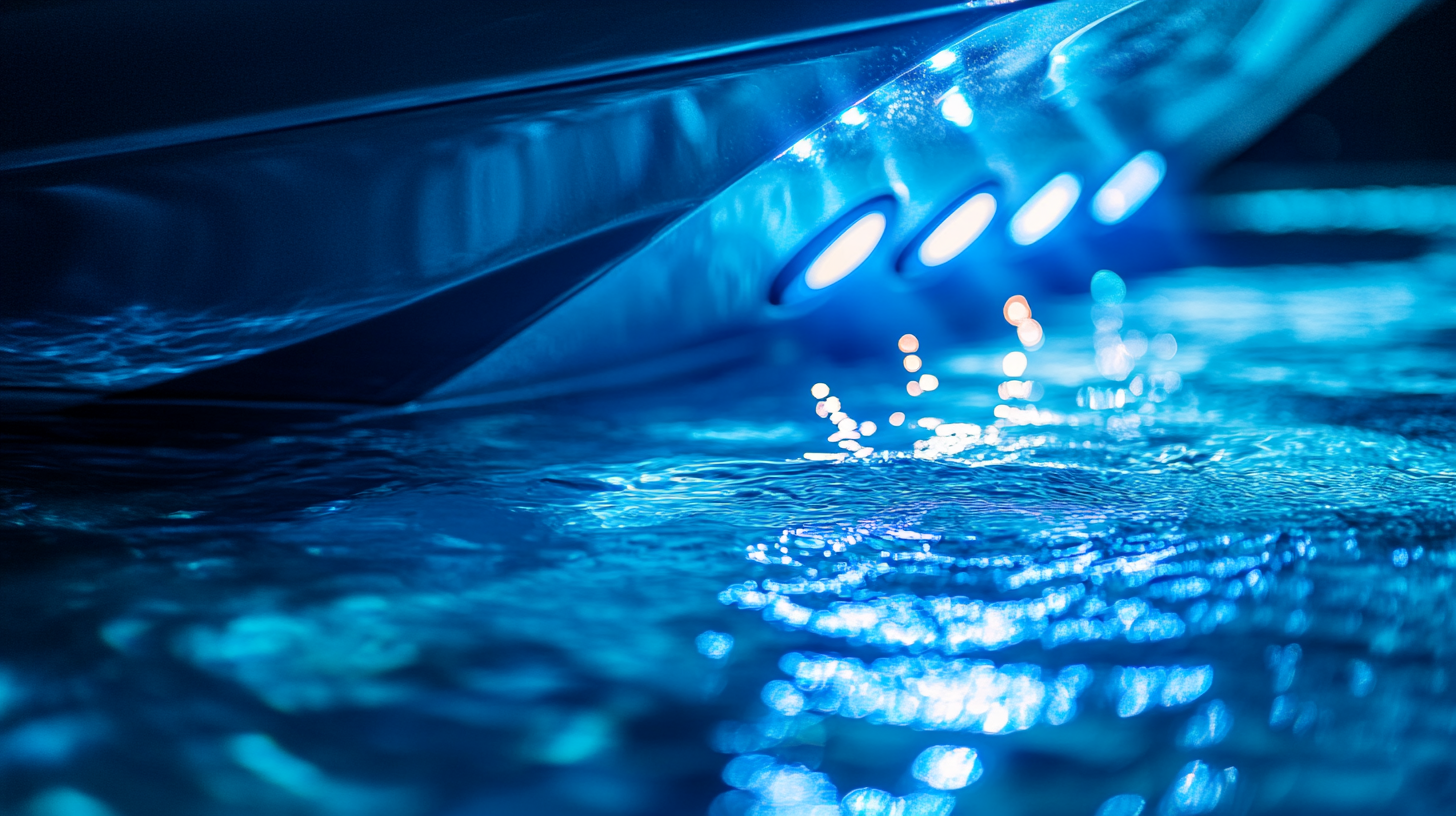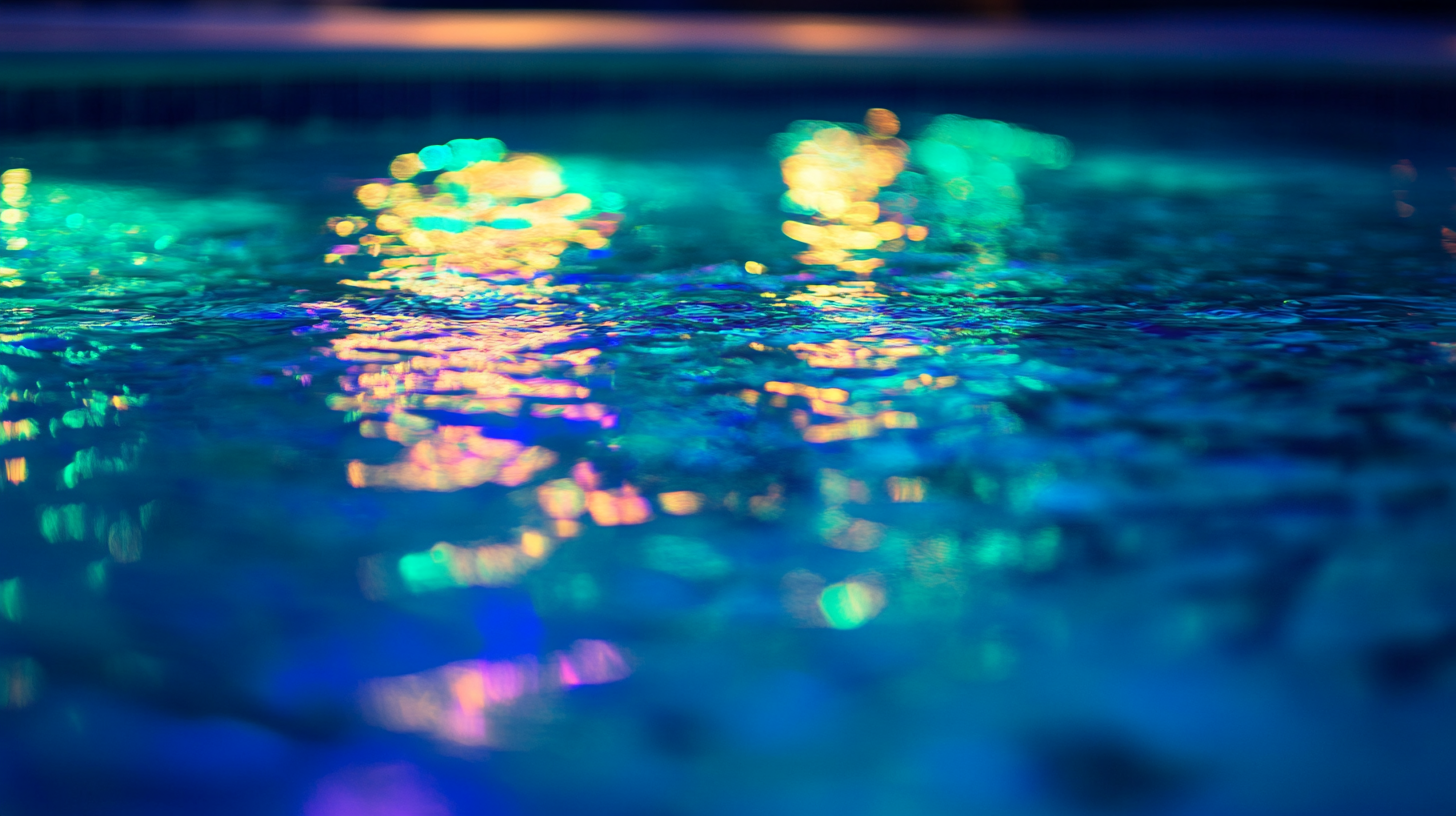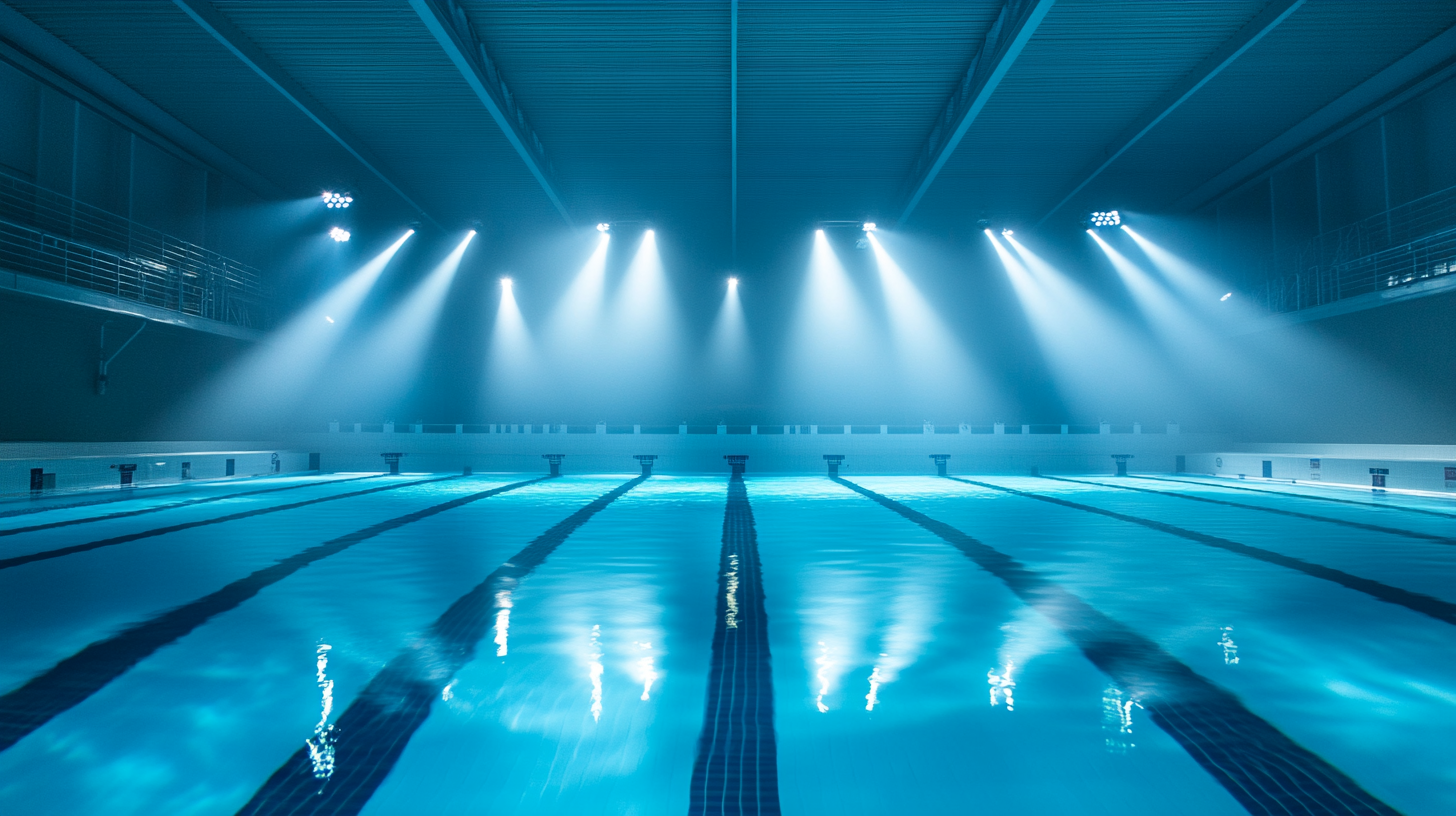Choosing the perfect underwater boat lights for shallow water adventures
When it comes to selecting the perfect lights for your shallow water boating adventures, understanding the types of underwater boat lights is crucial. Each type of light offers its own advantages, depending on what kind of experience you’re seeking and what conditions you’ll encounter. LED lights have quickly become the most popular option for underwater lighting. Known for their durability and exceptional efficiency, they don’t overheat and provide bright, crisp illumination that enhances both safety and aesthetics. They’re also highly customizable, with different colors available to create the right ambiance for your adventure.
Another common choice is HID (High-Intensity Discharge) lights, which emit an intense beam of light capable of penetrating murky waters. If you often explore deeper waters or areas with limited visibility, HID lights might be worth considering. However, for shallow water environments, where the light doesn’t need to travel far, HIDs can be unnecessarily bright and costly.
If you’re looking for an option with traditional flair, halogen boat lights are still in use, although they are less energy-efficient and produce more heat than LEDs or HIDs. These lights are cheaper upfront, but they may not be the best long-term choice due to their shorter lifespan and higher power consumption.
No matter which type of underwater boat light you choose, it’s essential to match the lighting to the specific conditions of your excursions. Whether it’s LED, HID or halogen, having the right equipment can significantly enhance the mood and safety of your underwater lighting setup, ensuring your adventures are both fun and functional!
Key factors to consider for shallow water lighting
When selecting the perfect lights for your shallow water journeys, several factors come into play that can affect both the performance of the lights and the quality of your experience. First and foremost, consider the water depth you’ll typically navigate. In shallow water, light doesn’t need to penetrate as far as it does in deeper environments, which means that you can often use lower-powered lights while still achieving excellent visibility. High-intensity lights, like those suited for deep-sea conditions, might be overkill and could even create excessive glare in a shallower setting. This makes LED lights particularly appealing for shallow water—it’s all about balancing brightness with subtlety.
The next factor to keep in mind is the water clarity. Clearer water allows light to travel more easily without as much interference, so you might not need as many lumens to reach optimal brightness. Conversely, if the water is murky or packed with silt, you’ll need something with a bit more punch. In cases of poor visibility, lights equipped with higher lumens will provide enhanced illumination, helping you maintain a clear view of your surroundings and identifying obstacles in the water.
Don’t forget about the color temperature of the lights. Different color temperatures can make a noticeable difference in how well you see beneath the surface. For example, cooler lights (those with a bluish tint) tend to cut through the water better, offering more clarity for spotting aquatic life, debris, or underwater features. Warmer tones (yellowish light), while excellent for creating a relaxing ambiance, may not travel as well or render details as effectively in shallow water conditions. If you’re eager to strike a balance between atmosphere and utility, installing lights with customizable color settings may be the way to go.
Take into account the potential impact on local marine life. Bright, intense lighting can sometimes attract or repel fish or other wildlife, potentially disrupting the environment you’re trying to enjoy. It’s best to research any local regulations or recommendations about underwater lighting to avoid unintended consequences for marine ecosystems. Ultimately, successful shallow water lighting requires you to blend practicality with purposeful design, ensuring that your setup enhances your boating adventures without negatively impacting the natural world around you.
Brightness and color temperature optimization
When you’re selecting the perfect lights for your shallow water boating adventures, achieving the right balance of brightness and color temperature is critical for getting optimal visibility without going overboard. The amount of brightness you need will vary depending on the clarity of the water and the specific activities you’re engaging in. For instance, if you’re venturing out in crystal-clear, shallow water, you won’t need ultra-powerful lights, and too much brightness could cause glare that detracts from your experience. In these conditions, a moderate lumen output will suffice to illuminate the underwater scene without overwhelming your view.
On the other hand, murkier water conditions call for brighter lights, ones that can penetrate suspended particles and provide better low-visibility navigation. A misstep in shallow waters can lead to underwater hazards like rocks or plant life that could damage your boat, so ensuring that your lights are appropriately bright is necessary to avoid these obstacles. The trick is to fine-tune the brightness to offer practical underwater lighting that’s carefully calibrated to the environment. If you’re unsure of how much brightness is enough, a good rule of thumb is around 600-800 lumens for shallow water. However, some premium LED lights allow you to adjust brightness levels, meaning you can adapt to different conditions on the go.
Equally important is the color temperature of the lights. For shallow water, cooler temperatures, typically between 5,000K to 6,000K, which give off a bluish-white hue, are widely preferred because they tend to offer better clarity. These cooler lights are fantastic for revealing small details beneath the surface, such as fish or underwater structures, making them perfect for adventures like nighttime snorkeling or simply enjoying the underwater view without diving in.
Warmer color temperatures, which emit a softer yellow or orange light, can create a calm and soothing atmosphere—ideal for quiet evenings when you want to relax without necessarily needing full underwater visibility. However, in shallow water boating situations, the warmer lights may not reach as far through the water and can make it a bit harder to see fine details. Many lights now come with variable color settings, giving you the flexibility to switch between warmer tones for relaxing and cooler tones for more practical visibility depending on your needs at the time.
One often overlooked consideration in optimizing both brightness and color temperature is the potential interaction with marine life. Studies have shown that cooler blue or white lights can sometimes attract fish, while brighter, higher lumen levels may deter them. Depending on whether you’re hoping to attract fish for observation or prefer to keep your swim area clear, it’s something to think about. Curating the right underwater lighting experience is about more than just brightening up the water—it’s about crafting the right mood, enhancing safety, and complementing the natural beauty of your surroundings as you embark on shallow water boating adventures.
Power sources and energy efficiency
When it comes to powering your underwater lighting setup for shallow water boating adventures, selecting the appropriate power source and considering energy efficiency is key to creating a functional and long-lasting system. As most boats have limited space for large power supplies, it’s vital to choose lights that won’t draw too much power while still providing ample illumination. LED lights once again prove to be a top choice here, as they are not only incredibly energy-efficient but also require significantly less power compared to traditional halogen or incandescent bulbs.
LEDs often consume about 80% less power than halogen lights while still producing comparable brightness. This reduction in power consumption means that you can run your lights for longer periods without draining your boat’s battery, making them ideal for long shallow water adventures where power reserves can be a concern. For boats that often rely on a single battery for navigation, communication, and lighting, the energy efficiency of LEDs helps maintain power balance, allowing you to enjoy both functionality and the aesthetics of illuminated waters while mitigating the risk of being stranded with a dead battery.
Another key consideration is voltage compatibility. Many underwater lights are designed for either 12V or 24V systems, which are the most common electrical systems in small to medium-sized boats. For smaller boats, 12V LED lights are widely available and tend to be the best match, given their low power draw and ease of integration into the boat’s existing electrical wiring system. However, if your boat runs on a higher voltage system, such as 24V, make sure that your underwater lights are rated for that voltage to avoid damaging the lights or your boat’s electrical circuits. Some high-end LED lighting systems even come with the flexibility to operate across a range of voltages, offering adaptability in differing boat setups.
Solar-powered underwater lights are also emerging as an innovative option for boating enthusiasts seeking the ultimate in energy independence. These systems charge during daylight hours and provide illumination once the sun sets. While they might not be the brightest option available due to the limitations of solar power storage, they work well in clear, shallow water environments where continuous high-intensity lighting isn’t necessary. Moreover, solar-powered lights contribute zero power drain on your boat’s electrical system, making them perfect for eco-conscious boaters or those who spend extended time at anchor in areas with good sunlight exposure.
For boaters who are frequently out at night, ensuring the system can handle extended periods of use without frequent battery recharges is essential. With a properly optimized energy-efficient setup, such as one relying on LEDs or solar, you can significantly extend your boat’s battery life and minimize the frequency of recharging. If you’re concerned about emergencies or need backup lighting during extended night trips, choose lights with automatic cutoff functionality. This technology prevents your lights from running unnecessary hours, allowing the power system to prioritize other essential systems onboard after dark.
Beyond reducing battery drain, energy-efficient lighting has another upside: heat reduction. Traditional lighting systems, such as halogen lights, often waste energy by dissipating much of it as heat, which can become problematic for boats, especially smaller ones. Heat generated inside a confined space could potentially damage sensitive electrical components or affect the comfort of those onboard. LED lights, however, operate efficiently at cool temperatures, ensuring that your underwater lights not only save energy but also avoid increasing the heat inside your vessel.
While solar and energy-efficient LED options can cut down on electrical consumption, they can also be useful in unscheduled situations. Imagine an emergency where every watt of remaining battery power counts. In such scenarios, having a robust, low-energy lighting system ensures that you are still able to illuminate your surroundings and navigate your way through shallow waters even when other systems might need to be powered down to conserve energy.
To give you a clearer comparison, here’s a simple breakdown of energy consumption for different types of lights commonly used in shallow water boating:
| Light Type | Power Consumption (Watts) | Lifespan (Hours) | Energy Efficiency |
|---|---|---|---|
| LED | 6-10 W | 50,000+ hours | High |
| Halogen | 30-50 W | 2,000-5,000 hours | Low |
| HID | 35-70 W | 5,000-8,000 hours | Moderate |
| Solar LED | 0 W (self-charging) | 40,000+ hours | High |
As illustrated in the table, LEDs and solar-powered lights stand out as the top performers in terms of energy efficiency, with the added advantage of extended lifespan. While halogen lights might offer a cheaper upfront cost, their energy consumption quickly makes them a less attractive option when you’re considering long-term use during your shallow water boating adventures.
Ultimately, choosing the right power source and focusing on energy-efficient lights means you’ll not only conserve power but also improve the longevity of your underwater lighting system. Whether you’re planning a quiet evening cruise or a more adventurous night of exploration in shallow waters, ensuring your lights are optimized for energy efficiency is critical for a successful and sustainable experience.
Installation tips for maximizing performance
When it comes to installing your underwater lighting system for shallow water boating adventures, there are a few important steps that can ensure maximum performance and longevity. First, you’ll want to carefully plan where to mount your lights. One of the most common mistakes is placing underwater lights too high or too low on the stern or sides of the boat. Mounting them just below the waterline ensures that the light spreads out effectively across the surrounding shallow water, offering good visibility without creating strange light distortions.
Pre-installation planning should also involve checking the material and build quality of your boat. Different hull materials require different installation techniques. For fiberglass hulls, a through-hull installation is often the safest and most secure method, ensuring that the lights are flush with the hull’s surface and water cannot seep in through poorly sealed hardware. If your boat has an aluminum hull, be sure to use marine-grade, corrosion-resistant gaskets and hardware to prevent galvanic corrosion around the lighting installation points.
Wire management is another critical consideration. Running wiring through a boat, especially if it’s a smaller vessel meant for shallow water, can be tricky, but keeping your wires organized and away from critical boat systems is essential for both safety and performance. Use marine-grade wiring designed specifically for wet environments, and encase it in flexible conduit to protect it from wear and tear. Ensure all wiring connectors are waterproof, as even the smallest amount of water exposure can result in electrical shorts or corrosion over time. Additionally, use shrink-wrap tubing to cover any splices or terminal connections, adding an extra layer of moisture protection to the most vulnerable points in the system.
One installation trick that can greatly improve the performance of your underwater lights is using a slightly angled mount. Instead of mounting the lights perpendicular to the hull, angling them slightly downward prevents most of the light from reflecting directly off the surface of the water. This setup ensures that the beam penetrates deeper into the water, creating a clearer view of the underwater environment around your boat. This small adjustment can make a huge difference, especially when navigating in murky or low-visibility shallow waters where precise lighting can help avoid potential mishaps.
Installation also offers an opportunity to set up dimming controls and color-changing features, if your lighting system includes those functions. Dimmable LEDs allow you to adjust the light output on the fly, which can be particularly handy as light conditions change, especially during dusk or dawn. For color-changing systems, ensure the controls are mounted in an accessible yet protected area, such as the boat’s dashboard or steering console, where it’s easy to toggle between settings as needed.
Lastly, test everything thoroughly before heading out on the water. After installing your lights, double-check that each light is operating at full capacity, and inspect every wire connection for stability. Test your lighting system in the water under different conditions, such as complete darkness, or while moving at different speeds. Running this type of functional check ensures you’ll avoid any unwanted surprises when you’re out on your shallow water boating adventures. By taking your time during the installation process and paying attention to these small details, you’ll ensure that your underwater boat lights provide optimal performance for many nights of exploration.


